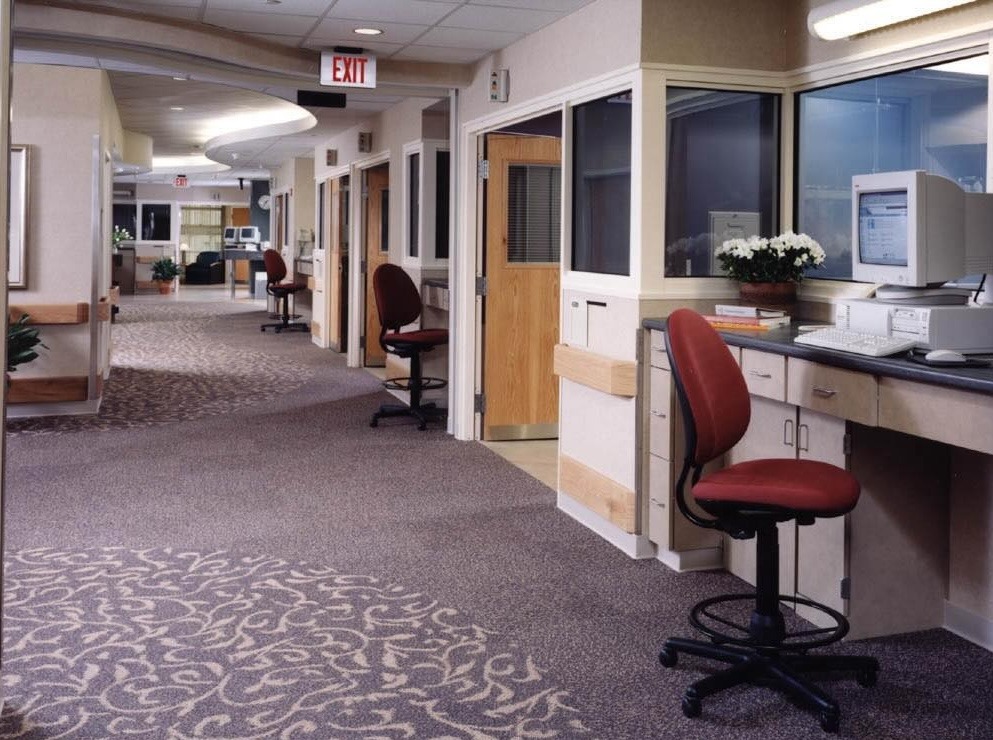Addressing the social determinants of health has been a hot topic in the U.S. healthcare industry for a while. But I don't hear very many healthcare designers talking about it.
Maybe it's because it's a little hard to make the connection between healthcare facility design and the social determinants of health. There is a connection, though.
Conditions in Our Environments
According to the U.S. government, social determinants of health "are the conditions in the environments where people are born, live, learn, work, play, worship, and age that affect a wide range of health, functioning, and quality-of-life outcomes and risks." Some examples are:
- Safe housing, transportation, and neighborhoods
- Racism, discrimination, and violence
- Education, job opportunities, and income
- Access to nutritious foods and physical activity opportunities
- Polluted air and water
- Language and literacy skills
What's missing in the U.S. government's definition is a mention of the environments where people get their healthcare. Or where they shop. Both also have an impact on people's health, well-being, and quality of life.
Relevance to Healthcare Facility Design
Of the six examples mentioned above, only three are relevant to facility design (and, of course, they are also relevant to other types of facilities):
- Discrimination: Healthcare facilities should be designed to be inclusive to support people of all needs, abilities, and identities. That means incorporating universal design principles.
- Access to nutritious foods and physical activity opportunities: Healthcare facilities should be designed to cue healthy food choices in cafeterias and vending areas. They should encourage use of stairs where possible and include accessible outdoor spaces to promote walking.
- Polluted air and water: Healthcare facilities are required to have pretty sophisticated air handling systems, but they should be designed with non-toxic materials and finishes to reduce people's exposure to harmful chemicals. Water filters can be added to systems to improve water quality.
What About Climate Change?
In addition, climate change, which is affected by human-generated carbon emissions and other greenhouse gases, is increasingly impacting public health. According to the U.S. Centers for Disease Control, these include:
- Increased respiratory and cardiovascular disease
- Injuries and premature deaths related to extreme weather events
- Changes in the prevalence and geographical distribution of food- and water-borne illnesses and other infectious diseases
- Threats to mental health
And as we all know, healthcare facility design and construction has a huge carbon footprint. Sustainable design practices, including paying more attention to the embodied carbon footprint of interior construction and renovations, are ways that healthcare facility design can address the social determinants of health.
Impact on ESG
A few years ago, Modern Healthcare reported that most hospital and health system leaders don't make the connection between the environmental sustainability and the social determinants of health.
But I think that is changing.
For one thing, hospital and health system leaders are realizing that if they want to have a comprehensive Environmental/Social/Governance (ESG) framework, they have to have strong environmental initiatives. Increasingly the lending and finance community is requiring it, which is a major incentive.
Want More?
That's all I've got to say, but check out these articles/resources:
Beyond Health Care: The Role of Social Determinants in Promoting Health and Health Equity, Kaiser Family Foundation, 2018.
IPCC Sixth Annual Assessment Report on Climate Change, August 2021.
8-Step Model for ESG and Wellness in the Workplace, Gensler, August 2021
P.S. Please do me a favor -- if you liked this post and like this blog, please share it with others by sending them the link or posting it on your Twitter, LinkedIn, or Facebook. Also, don't forget to subscribe, so you'll get emails when new content is posted. Thanks!







